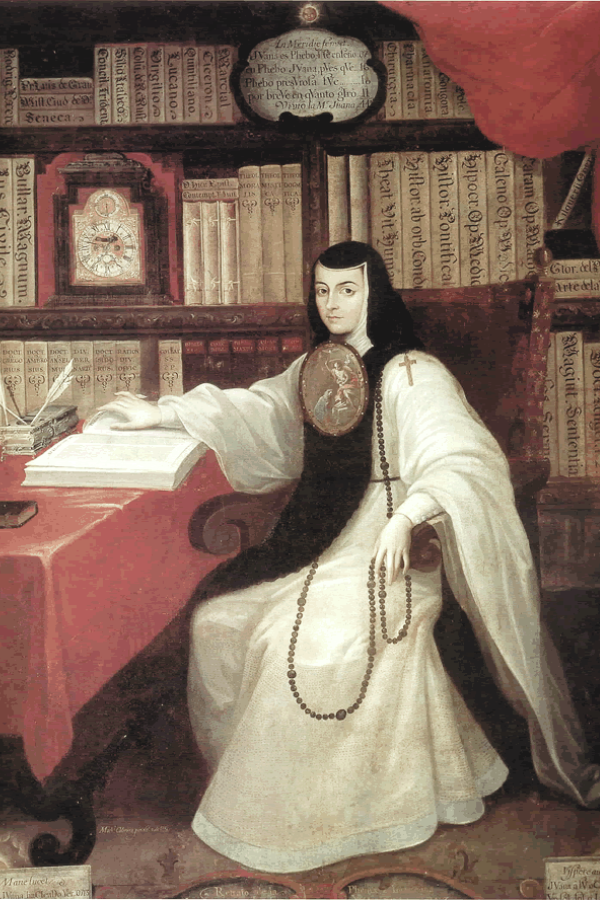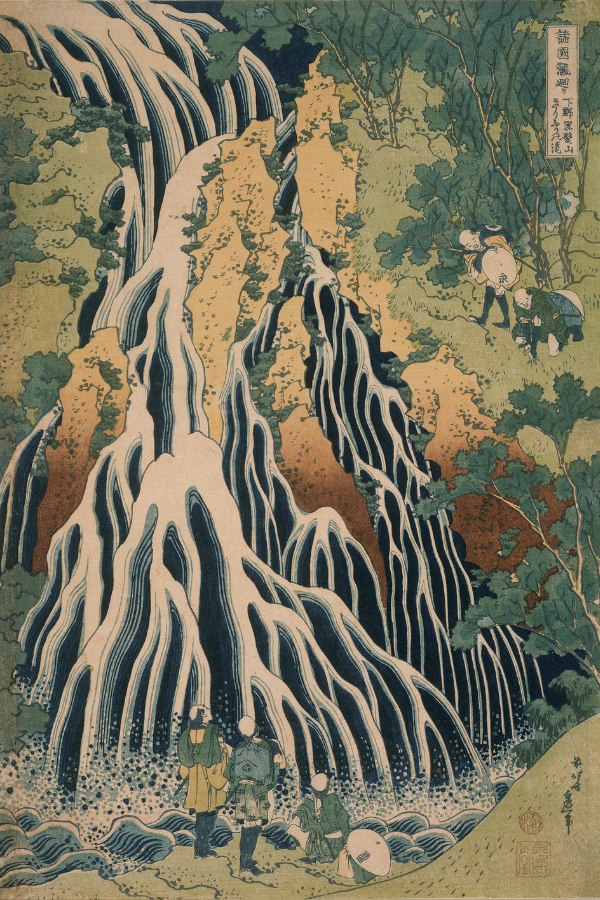
It’s Not All About Takashi Murakami! Female Superflat Artists We Love.
Summary
This article shines a light on female Superflat artists, emphasizing their critical role within Takashi Murakami’s Superflat movement. Superflat, blending pop culture with traditional Japanese art, critiques and celebrates post-war Japanese culture. The article introduces female artists like Chiho Aoshima and Aya Takano, whose works explore themes of identity, sexuality, and societal norms, enriching the movement with diverse perspectives on the female experience in modern and traditional contexts.
Reflection Questions
- How do female Superflat artists contribute to the dialogue on gender and culture within the movement?
- What impact does the inclusion of female perspectives have on the themes and reception of Superflat art?
- How do the works of artists like Chiho Aoshima and Aya Takano challenge traditional views on femininity and sexuality?
Journal Prompt
Reflect on the influence of female artists within the Superflat movement and other contemporary art movements. Consider the importance of diverse perspectives in art and how they shape cultural and societal understandings. Write about a specific piece by a female Superflat artist that resonates with you, discussing its themes and impact on your view of art and culture.
Takashi Murakami created the Superflat movement in the late 1990s. This fine arts movement not only challenged the boundaries between high art and pop culture but also provided a platform for exploring complex themes of identity, sexuality, and societal norms through its distinctive aesthetic. Within this movement, female Superflat artists offer unique perspectives.
These women, through their diverse bodies of work, navigate the realms of fantasy, consumerism, and the erotic, employing the flat, graphic styles characteristic of Superflat to critique and celebrate the nuances of female experience. Their contributions extend beyond mere representation; they dissect the layers of gender, culture, and the consumerist landscape, enriching the movement with their nuanced explorations of the female psyche and its representation in modern and traditional contexts. Let’s take a closer look at the work of female Superflat artists like Mariko Mori and Chiho Aoshima.
What Exactly is Superflat Art?
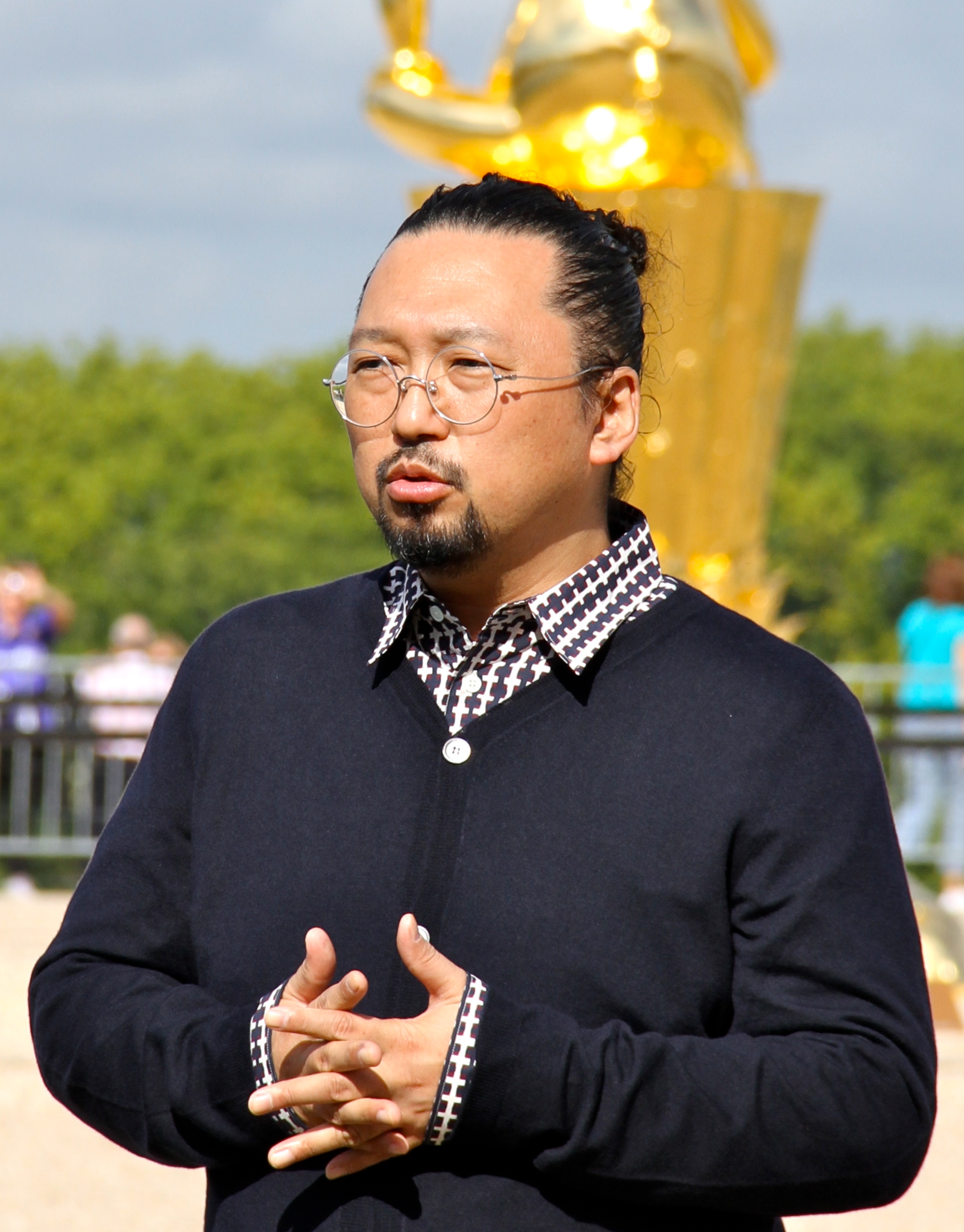
Superflat is a contemporary art movement that was started by the Japanese artist Takashi Murakami in the late 1990s. This Japanese graphic art style characterized by flat surfaces, vibrant colors, and a blending of high and low cultures. The movement draws heavily on more than one Japanese subculture. For example, the pop art movement pulls from Japanese popular culture, particularly anime and manga, and integrates both traditional and contemporary themes. Superflat art often explores the nature of consumerism, the superficiality of contemporary life, and the blurring of boundaries between art, culture, and commerce.
The movement not only challenges the distinctions between different artistic genres and levels of cultural taste but also reflects the impact of digital technology on visual art, emphasizing two-dimensionality and the influence of screen-based images. Murakami’s work, along with that of other Japanese artists associated with the Superflat movement, critiques and celebrates the complexities of post-war Japanese culture and its relationship with the Western art world. Superflat has influenced a broad range of visual media, including fine art, graphic design, and animation, making it a significant cultural phenomenon beyond the confines of the art world.
The Evolution of Superflat (As Told by Takashi Murakami)
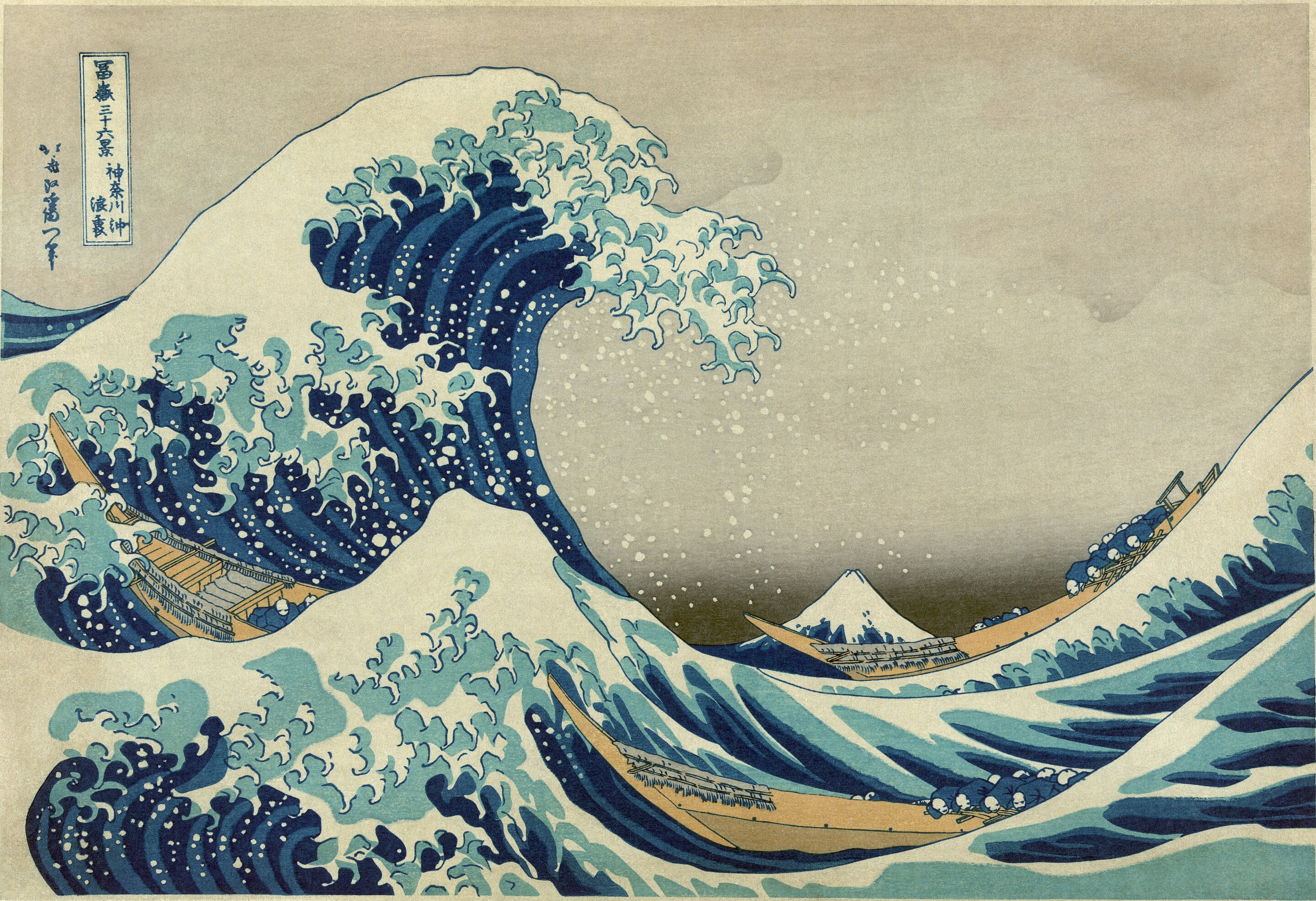
We cannot discuss Superflat art without mentioning Hokusai. Takashi Murakami described Hokusai’s work as “superflat” because he saw a direct lineage between the flat, two-dimensional aesthetic and thematic elements in traditional Japanese art, like those found in ukiyo-e woodblock prints by artists such as Hokusai, and the contemporary Superflat movement that he founded.
Murakami argued that this flatness is a distinctive feature of Japanese painting throughout history, which does not adhere to the Western perspective of three-dimensional representation. This quality of flatness, according to Murakami, is evident in various forms of Japanese cultural outputs, from traditional painting to the manga and anime characters produced by today’s young artists.
Fuel your creative fire & be a part of a supportive community that values how you love to live.
subscribe to our newsletter
*please check your Spam folder for the latest DesignDash Magazine issue immediately after subscription

Hokusai, best known for “The Great Wave off Kanagawa,” utilized a style that emphasized bold lines, flat areas of color, and a lack of Western perspective. These elements created a sense of depth and dimension through stylization rather than through the techniques of Western realism. Murakami drew parallels between this traditional aesthetic and the visual strategies employed in contemporary Japanese pop culture, suggesting a continuity and an intrinsic quality in Japanese visual culture that survives into the modern era.
By referencing Hokusai and other traditional artists, Murakami positions Superflat as both a continuation and a reinterpretation of Japanese aesthetic principles, highlighting how these traditional art forms have influenced and been transformed into modern expressions like manga and anime, which also feature a distinct flatness and graphic quality.
The 2001 Superflat Exhibition
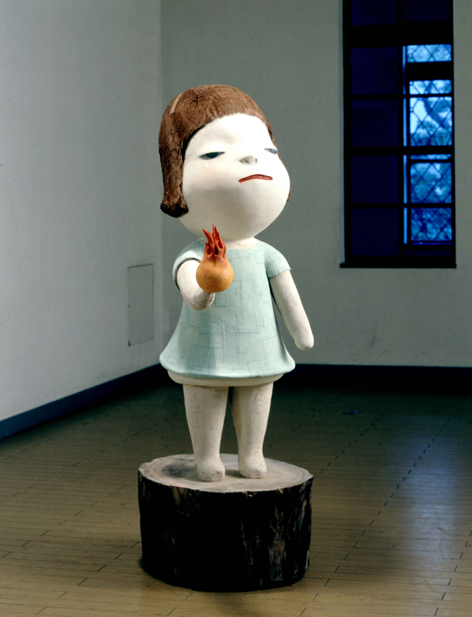
The 2001 exhibition entitled “Superflat” was a pivotal event that introduced the Superflat art movement, conceptualized by Takashi Murakami, to a broader audience in the United States. This touring exhibition showcased the work of Murakami and other Japanese artists who were integral to or shared the aesthetic sensibilities of the Superflat movement. The exhibition toured various locations, including the Museum of Contemporary Art in Los Angeles (specifically in West Hollywood), the Walker Art Center in Minneapolis, and the Henry Art Gallery in Seattle.
“Superflat” was not just an art exhibition; it was a manifesto of sorts that presented Murakami’s vision of the Superflat concept, which he described as a critique and exploration of post-war Japanese culture, consumer society, and the blurring boundaries between high art and popular culture. The exhibition featured a wide range of works, including painting, sculpture, and video art, all of which reflected the movement’s emphasis on the flat, graphic qualities derived from manga and anime, as well as traditional Japanese art.
Murakami curated the exhibition, but many other artists participated. The artists featured in the “Superflat” exhibition varied in their approaches and subjects but shared a common interest in exploring the effects of consumer culture, the fetishization of innocence, and the impact of technology on society. Besides Murakami’s own works, the exhibition showcased pieces by artists like Yoshitomo Nara, whose work often depicts menacing yet childlike figures; Chiho Aoshima, known for her fantastical landscapes and supernatural beings; and Aya Takano, whose art presents a surreal, erotically charged universe inhabited by androgynous characters.
The “Superflat” exhibition was significant for several reasons. It played a crucial role in popularizing Japanese contemporary art in the West, highlighting how Japanese aesthetic principles could offer new perspectives on global art and culture. It also facilitated a dialogue between Eastern and Western art forms, challenging traditional distinctions between fine art, commercial art, and popular culture. Moreover, the exhibition emphasized the role of art in critiquing and reflecting upon the complexities of modern life, especially in the context of globalization and the digital age.
Women in Superflat Art: How They’re Depicted and How They Contribute to the Movement
Women in the Superflat art movement, both as subjects and as artists, play a significant role, reflecting the movement’s broader themes of consumer culture, sexualization, and the blending of high and low art forms. The representation of women in Superflat art often draws from the stylized, exaggerated features found in manga and anime, highlighting aspects of kawaii (cute) culture, as well as exploring themes of fantasy, sexuality, and innocence.
Women As Superflat Subjects
As subjects within Superflat artworks, women and female characters are frequently depicted in a manner that oscillates between empowered and objectified, reflecting the complex ways in which female identity and representation are navigated in contemporary Japanese culture and beyond. These representations can be seen as a critique of the commodification of female bodies and identities in consumer culture, as well as an exploration of the fluid boundaries between innocence and eroticism in Japanese pop culture imagery.
Female Superflat Artists
Female artists associated with the Superflat movement, although fewer in number compared to their male counterparts, bring unique perspectives to the movement’s themes and aesthetics. Artists like Chiho Aoshima and Aya Takano, for example, create works that embody the Superflat aesthetic through their use of flat planes of color, childlike simplicity, and themes that explore the fantastical, surreal, and often erotic. Aoshima’s work, for instance, often features dreamlike landscapes populated by ghostly figures and mythical creatures, while Takano’s art delves into a world of androgynous beings and utopian narratives, challenging traditional notions of gender and sexuality.
These women artists contribute significantly to the movement by expanding its thematic range and exploring the nuances of female experience and identity within the Superflat aesthetic. Their work not only adheres to the movement’s critique of consumerism and the blurring lines between art and popular culture but also adds layers of complexity concerning gender, fantasy, and the body, enriching the movement’s exploration of contemporary life and culture. Let’s take a closer look at the work of these fascinating women.
Chiho Aoshima
Chiho Aoshima is a Japanese artist whose work embodies the Superflat movement’s exploration of fantasy, the supernatural, and contemporary life, merging traditional Japanese aesthetics with modern pop culture elements. Aoshima did not receive formal training in art; she graduated with a degree in economics, which perhaps offers her a unique perspective on consumer culture, one of Superflat’s central themes. Her work often involves surreal landscapes and fantastical creatures, rendered in a vivid, detailed style that is both eerie and enchanting. Aoshima utilizes digital technology to create her artworks, drawing with graphic design software, which allows her to achieve the Superflat aesthetic’s characteristic smoothness and depth of color.
Aoshima’s art is distinctive for its exploration of themes such as the cycle of life, nature, urbanization, and the coexistence of the natural and artificial. She creates immersive, large-scale installations and digital prints that depict apocalyptic visions, serene landscapes, and urban environments, inhabited by ghostly figures, deities, and mythical creatures. Her work often blurs the boundaries between the living and the spiritual world, reflecting on mortality, rebirth, and the transient nature of existence. Aoshima’s contribution to the Superflat movement extends beyond her visual style; her thematic concerns resonate with the movement’s critique of contemporary society, the fusion of high and low culture, and the exploration of Japanese identity in a globalized world.
Aoshima has participated in numerous exhibitions worldwide, both group shows within the context of the Superflat movement and solo exhibitions that highlight her unique contribution to contemporary art. Her involvement with Superflat, particularly through collaborations with Takashi Murakami and exhibitions like “Superflat” at the Museum of Contemporary Art, Los Angeles, has positioned her as a pivotal figure in the movement. Aoshima’s work, while deeply rooted in the aesthetic principles of Superflat, pushes the boundaries of the movement through her innovative use of digital media and her exploration of existential themes, making her a significant voice in contemporary art.
Aya Takano
Aya Takano is an artist and writer deeply connected to the Superflat movement, whose work is recognized for its ethereal, otherworldly qualities and its exploration of themes such as sexuality, futurism, and the intersection of human and cosmic existence. Takano’s art is characterized by its delicate, dream-like depictions of slender, androgynous beings that inhabit fantastical, often surreal landscapes. This aesthetic is influenced by a variety of sources, including manga, science fiction, and traditional Japanese art, reflecting Superflat’s ethos of blending pop culture with high art.
Takano’s narratives frequently explore the tension between innocence and eroticism, a recurrent theme in Superflat art, alongside an interest in ecological and spiritual issues. Her paintings and illustrations often feature characters on the verge of adolescence, navigating worlds where the boundaries between reality and fantasy blur. This exploration of the liminal spaces of human experience speaks to broader Superflat themes of consumerism, technology, and alienation in the postmodern world. Takano’s work, while deeply personal and introspective, offers a critique of societal norms and the constraints imposed on individual identity and sexuality.
As a key member of Kaikai Kiki Co., Ltd., a prolific art production and artist management company founded by Takashi Murakami, Takano has been instrumental in promoting the Superflat movement’s ideals. Her participation in significant exhibitions, both in Japan and internationally, has helped to define the movement’s aesthetic and thematic scope. Through her art and her written work, Takano pushes the boundaries of Superflat, exploring the complexities of human existence and our relationship with the natural and supernatural world, making her an essential voice in contemporary Japanese art.
Mariko Mori
Mariko Mori is a Japanese artist whose work, while not strictly part of the Superflat movement, shares with it a fascination with technology, pop culture, and the blending of traditional Japanese elements with futuristic themes. Mori’s art encompasses a wide range of media, including photography, video, sculpture, and digital installations, reflecting her interest in science fiction, spirituality, and the intersection of the ancient and the digital. Her early works in the 1990s, which often featured herself in various guises against digitally manipulated backgrounds, explored themes of identity, the body, and the impact of technology on the self.
Mori’s subsequent work has increasingly focused on themes of interconnectedness, transcendence, and rebirth, drawing on both Shinto and Buddhist iconography as well as contemporary scientific concepts. Her ambitious installations, such as “Primal Rhythm” (which includes a sun pillar and a moon stone set in the natural landscape of Okinawa), seek to create spaces for reflection and meditation, encouraging viewers to consider their relationship with the cosmos and the cycles of life and death. This shift towards a more spiritual and philosophical exploration marks a divergence from the core themes of the Superflat movement, emphasizing a holistic vision of humanity’s place in the universe.
Although Mariko Mori’s work diverges from the central preoccupations of the Superflat movement, her early career, especially her exploration of pop culture and technology’s impact on individual and collective identity, resonates with Superflat’s critique of contemporary society. Mori’s evolution as an artist reflects a broader trend within contemporary Japanese art, of moving beyond the immediate postmodern concerns towards a more integrative and transcendent approach. Her contributions to the field, while distinct, share with Superflat a willingness to erase boundaries—not just between high and low culture, but between art and spirituality, past and future, thereby enriching the dialogue around contemporary art in Japan and beyond.
Final Thoughts on the Superflat Art Movement
The presence and contributions of women within the Superflat movement have been indispensable to its evolution and impact on contemporary art. Through their works, artists like Chiho Aoshima, Aya Takano, and others have challenged conventional notions of femininity, offering nuanced reflections on societal expectations, sexuality, and the commodification of the female body. Their art serves as a testament to the fluidity and complexity of female identity within the context of Japanese culture and beyond. As the Superflat movement continues to influence global art discourse, the voices and perspectives of these women remain essential in shaping its trajectory and ensuring a more inclusive and diverse representation within the realm of contemporary art.
Design Dash
Join us in designing a life you love.
January 2026 Interior Design Events You Can’t Miss
January 2026 design fairs offer firm owners early insight into sourcing, materials, and market direction for the year ahead.
7 Fabulous French Furniture Brands to Honor Before Maison&Objet
With Maison&Objet Paris 2026 on the horizon, now is the perfect time to honor these iconic French furniture brands!
10 Design-Forward Menorahs for a Meaningful (and Artful) Hanukkah
Enjoy ten design-forward menorahs that combine ritual and artistry. These objects feel meaningful, intentional, and at home year-round.
5 Designer-Approved Christmas Trees to Inspire Your Holiday Decorating
LIKE 2 LEAVE COMMENT 0 6 min read SummaryThe most compelling Christmas trees don’t focus on chasing trends or achieving perfection; instead, context is key. These five designer-approved trees show how scale, materials, setting, and personality can shape holiday decorating that feels intentional, expressive, and true to its environment, whether playful, restrained, lived-in, or theatrical.…
11 Christmas Paintings to Put You in the Holiday Spirit This Year
Explore 11 Christmas paintings that celebrate the beauty, traditions, and emotions of this festive, fun, and meaningful holiday season.
Styling Spaces Seasonally for Evergreen Portfolio Content + Of-the-Moment Marketing
Learn how interior designers can style spaces seasonally to create both evergreen portfolio images and timely marketing content.




